Note: This post contains affiliate links. As a Skillshare Affiliate and Amazon Associate I get commissions for purchases/signups made through links in this post.
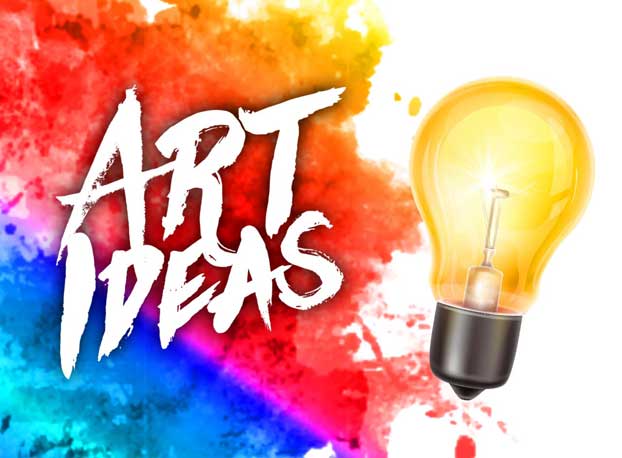
Do you love drawing and painting beautiful pictures, but something’s wrong?
Are the creative juices just not flowing like they used to?
Do you even WANT to create something, but nothing works and you end up frustrated lately?
Don’t give up just yet!
Try some of the following 15 drawing and painting ideas guaranteed to rekindle the flame and get you back into the creative flow that makes you forget about time (and space).
NOT SURE, IF DRAWING IS FOR YOU?
Check out: Can Anyone Learn To Draw?
Table of Contents
1. Try A Different Medium
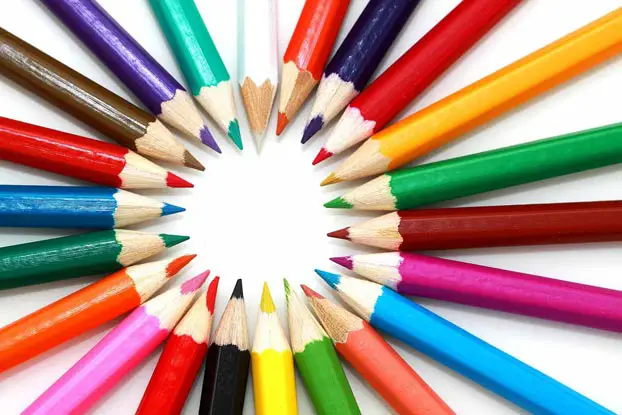
Are you a pencil artist? Are you a traditional painter using acrylic paint? Do you like colored pencils?
It might be that you are tired of the medium you use most of the time and need something new.
If you are a pencil artist, try drawing something with fineliners (like Sakura Pigma Microns or Faber-Castell Pitt Artist Pens). It’s still black and white, so it’s not THAT different – but it does require a somewhat changed approach.
You can’t use (50) shades of grey, but you have to simulate them by thinking in terms of crosshatching.
If you are a traditional painter using acrylic paint, try some digital art with a graphics tablet (I personally use the Artist Pro 16TP – check out all my art tools here!).
It opens up a completely different world for you:
You have to look at the computer screen while drawing, instead of looking at your artwork.
You can pick and choose colors instantaneously without an arduous mixing process that dirties your fingers. And you can enjoy the comfort of „CTRL + Z“.
If you like colored pencils, try normal pencils.
It’s similar enough that you don’t have to relearn the mechanics, but it’s a novel challenge because you have to think in terms of values instead of colors.
2. Paint Something Large (Or Small)
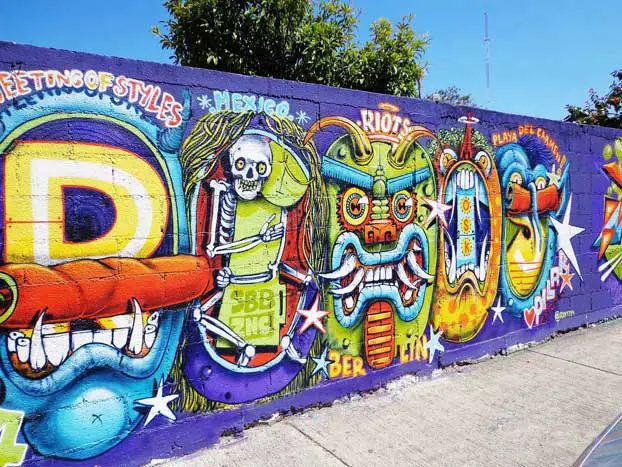
The size of your artwork is another aspect you can experiment with. Changing it will rock your world and confront you with a new challenge.
For example, I normally only create artworks in A4 size (8,27 by 11,69 inches), but last year I challenged myself and did this street painting that is even bigger than my body (which is unbelievably big).
It was quite intimidating at first, but I got the hang of it sooner or later.
With a big picture like that you have to work with your whole arm and even your whole body instead of just using your wrist and fingers.
And you constantly have to take a step back to get an overview of the whole picture.
This year I did an even bigger street painting, a collaboration with a fellow (tattoo) artist of my hometown (http://www.hautbild-bocholt.de). She is used to working on these big pieces and said that she finds it more difficult to create something small.
So it goes the other way, too. The idea is to challenge yourself with a size that is way bigger (or smaller) than what you are used to and learn from it.
3. Paint In Black And White
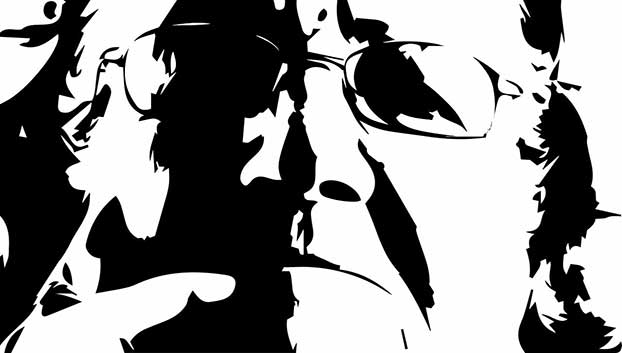
Painting in black and white is a great challenge. I love using black and white (check my gallery to see for yourself)!
This is a great way to try something new, especially if you are used to creating colored artwork. Like I said above, you have to think in terms of crosshatching instead of gradients.
You can take this one step further and make it really interesting by just using black shapes and no outlines at all.
A great example of this is Frank Miller’s art style in Sin City.
Most of the time he doesn’t use any outlines whatsoever.
Doing this makes you have to think about how you use black and white:
You have to balance describing silhouettes, form shadows and cast shadows all by just using black and white shapes.
So simple and yet so hard!
Doing it wrong can quickly lead to an unreadable mess of a picture, but doing it right can make for a maybe simple, but really amazing piece of work!
CHECK OUT: 30 Quick And Easy Drawing Tips To Boost Your Progress
4. Create An Artwork In Greyscale
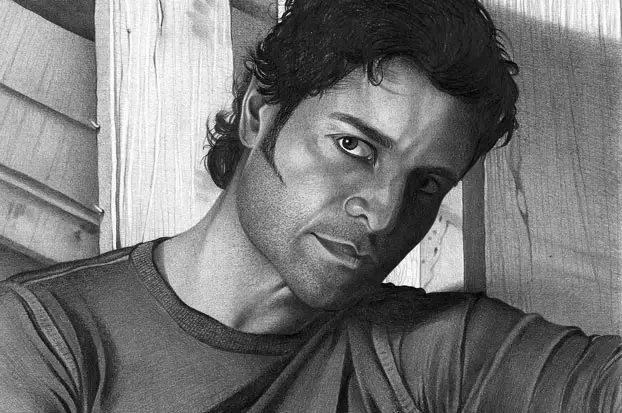
This is similar to drawing and painting idea #3.
Drawing or painting in greyscale forces you to learn how to use values effectively. In this style of artwork, you have to use values to describe local colors. This can be a little challenge at first.
You will see what I mean, if you convert an image to greyscale in Photoshop (or any other graphics program):
An image might look great in color, but it somehow doesn’t work in grey tones.
Let’s say you have an image of yourself with the sky in the background. It might look alright, but as soon as you convert it to greyscale, it looks like the sky and your face become one object. You lose the hard edge.
That’s because the sky and your face have the same value, but different colors. The colors enable you to differentiate between them, but take them away and you are left with a grey mess.
That’s a problem you have to overcome with artwork in grayscale:
Instead of thinking „What color am I going to paint this?“ you have to think „How bright am I going to paint this grey value?“.
It can be hard at first, but it’s also liberating because it simplifies things: You don’t constantly have to think about color theory and harmony all the time. You get back to the basics!
5. Make A Painting With A Time Limit
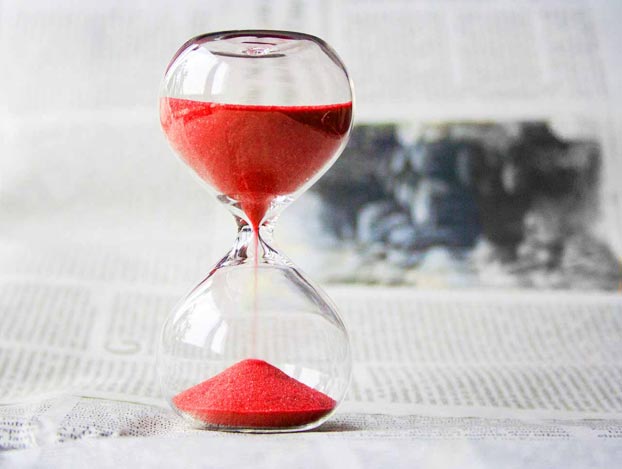
How much time do you usually need for a finished artwork?
As for me, I happen to need around 10 hours for one of my finished A4-sized pieces.
That’s partly due to the media I like to use:
Pencils, colored pencils, fineliners and brush pens. These materials have small tips and thus take a long time to cover a lot of space on the canvas or paper.
A friend of mine I mentioned above usually only takes 2 to 5 hours for a finished (big) painting.
However long YOU need, you can try to set a time limit. Doing this forces you to think and act faster and keeps you from drawing too many details.
Depending on how far you want to push this game you can even do something like the „Drawing X in 1 hour / 10 minutes / 1 minute“-challenges that are popular on YouTube. Like this:
6. Do An Art Challenge To Push Yourself
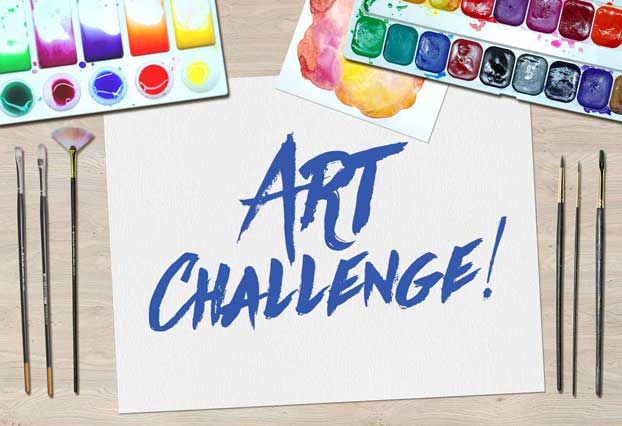
Drawing and painting idea #5 was all about time and a way to push yourself by limiting it.
You can take this one step further and do some crazy art challenges to really test your mettle!
Try something like this and see, if it doesn’t get your creativity back:
Here are some more ideas:
- Paint with your hands
- Paint with your feet
- Do bead art (like Kens Bead Art)
- Draw with your non-dominant hand
7. Limit Your Colors
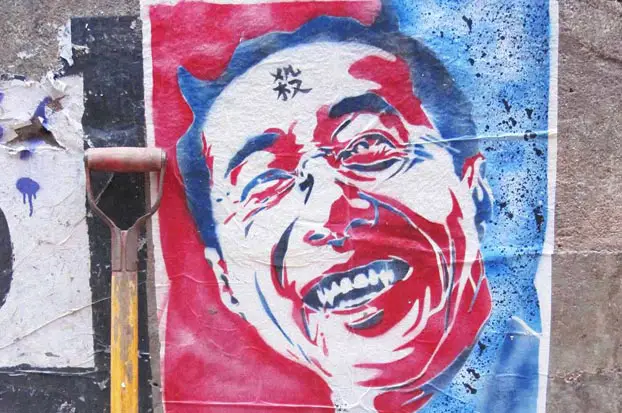
Limiting your colors can pose some new challenges, but still produce amazing pieces of art.
It’s not as extreme as black and white painting where you basically reduce everything to two values.
But it’s similar in a way because you restrict your color choices somewhat.
This forces you to stop thinking about local colors too much and makes you think more creatively.
If you only use 2 or 3 colors for your whole image, you can’t paint everything in its local color.
Somewhere there might be a blue banana or a green human being (which you could probably call an alien then).
This approach turns the focus away from (photo)realism and emphasizes color harmony. The few colors you use have to work together well and create a compelling atmosphere and the right emotions.
Improve Faster With My FREE e-Book!
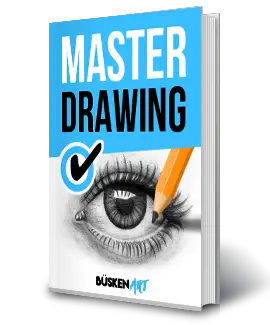
Learn how to MASTER drawing in 5 easy steps with my FREE PDF guide!
Discover a methodical way to learn drawing effectively!
8. Paint Something Entirely Different
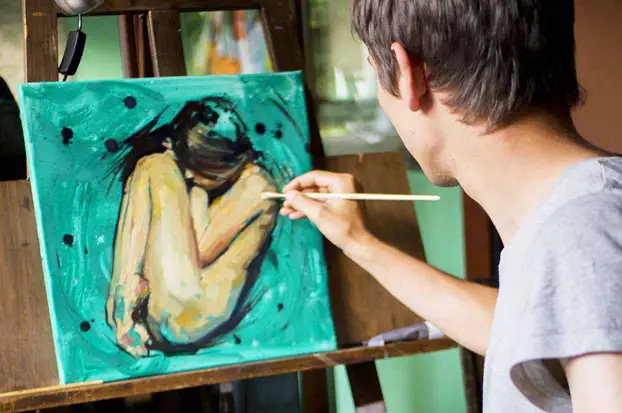
This one harks back to idea #1.
But instead of trying other materials, you can try to draw or paint something entirely different!
The point is to try something new:
If you usually draw figures or faces (like I love to draw superheroes), try to draw something else for a change:
Draw a house, a landscape, an animal or a still life.
If you are a landscape painter, try something abstract. Throw around some colors without it making any sense at all! (Did I feel a little jab at abstract painters…?)
If you love drawing architecture, try figurative drawing for a change.
Whatever you do, do something else!
The point is to get out of your comfort zone and start learning again. On the one hand, it might be hard at first and you will probably feel like you’ve never drawn or painted before…
but on the other hand, the learning curve is steep uphill again.
This might be just what you need to get you out of that creative rut and spark some new ideas!
And who knows, maybe your newly acquired skills might come in handy sooner rather than later…
9. Draw Something With Just Outlines
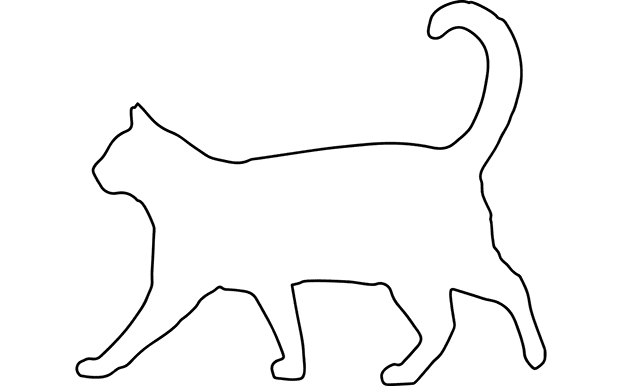
This is more of an exercise than a real method for creating good drawings.
It is simple though and can help you get a better understanding of forms and drawing 3D objects on a 2D surface – making something appear plastic that actually isn’t.
This exercise is a form of live drawing, but it’s still simple and you can do it pretty much anywhere.
The gist of it is this:
Look around and draw something you see… a car, a book, a lamp, a chair, whatever.
But draw it just using one outline – the outline in its literal sense.
Don’t draw any inner lines. Pretty much just draw the shape of the object, but in perspective instead of graphically.
Here are two quick drawings of objects on my desk I did to illustrate the concept:
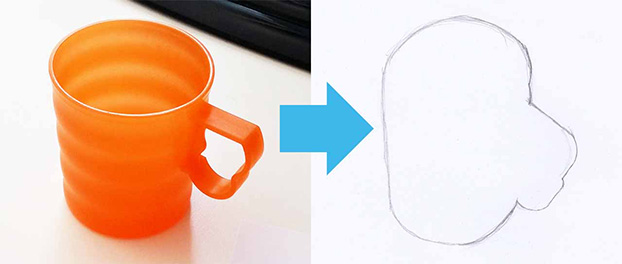
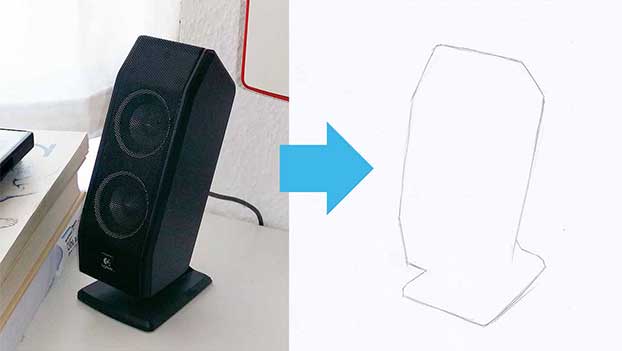
You might find it difficult at first, but it will help you think about drawing differently.
It will help you think three-dimensionally and you will learn how to put that into your normal drawings. Even better, it will probably happen automatically the more you do this exercise.
Give this one a try and see, if it does anything for you. I bet it does.
10. Copy A Photograph Meticulously
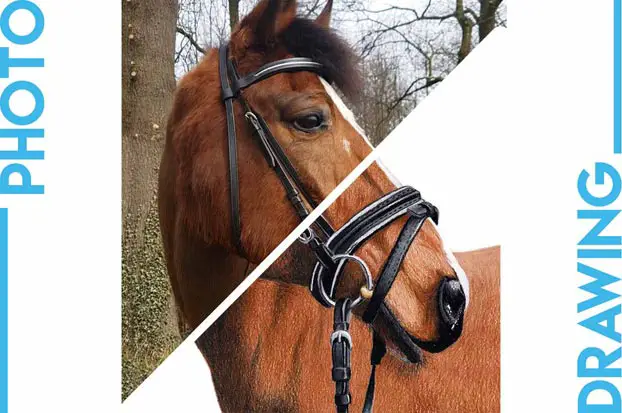
Whether you are into realistic drawing and painting or not it can be a great thing to try your hand at it.
A pretty usual progression for an artist is to start out wanting to draw and paint (photo)realistically and later on, after achieving that, moving on to looser creative artworks.
If that’s the way it will go for you or not, you should try out realistic drawing either way!
Take a photograph you like (the subject doesn’t matter) and try to copy it as well as you can. Just like I did with the horse photograph above.
This will teach you several things and improve your observing skills.
If you want to recreate a photograph perfectly, you have to look really closely and concentrate on shapes and edges.
You will learn that in the end everything is just shapes in different values/colors with either hard or soft edges as I describe in my guide on How to Draw Anything.
While this may seem like a tedious task, if you aren’t really into realistic drawing and painting, it can still be a valuable exercise and will help you create more convincing „unrealistic“ artworks.
11. Draw Something On Black Paper
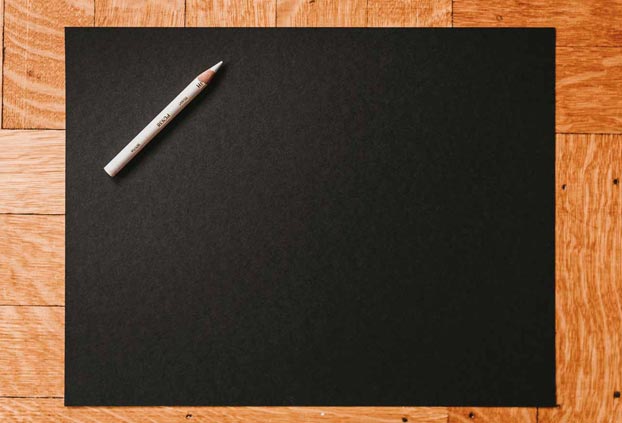
Drawing or painting on black paper is a really nice change of pace if you haven’t tried it yet.
While it’s obviously best suited for artworks with dark and shady scenes, the cool thing about it is that you don’t have to draw the dark parts.
So, if your picture has a lot of dark shadows, you won’t have to fill those with black because they already are! Yay!
That way you can create a finished piece of art in a much shorter time span than you could by drawing on standard white paper.
Take me for example:
I’ve drawn a couple of artworks with colored pencils (I recommend Prismacolor Premiers or Faber Castell Polychromos. I personally use the Prismacolors because they are cheaper!).
Most of my A4-sized pictures I draw with colored pencils take about 10 hours. But this image of the Joker that I drew on black paper only took me 2 hours!
Try it out! Black paper is an amazing way to create atmospheric dark pieces of art in a relatively short amount of time.
It also requires a different approach to drawing/painting in general because you only put the light parts on paper while the dark ones are already there.
If you want to learn some tips and tricks about drawing on black paper, watch my video here:
Check out Gabriele Dell’Otto for some amazing black paper pieces!
RELATED: How To Draw On Black Paper: A Complete Guide
12. Do A Live Painting
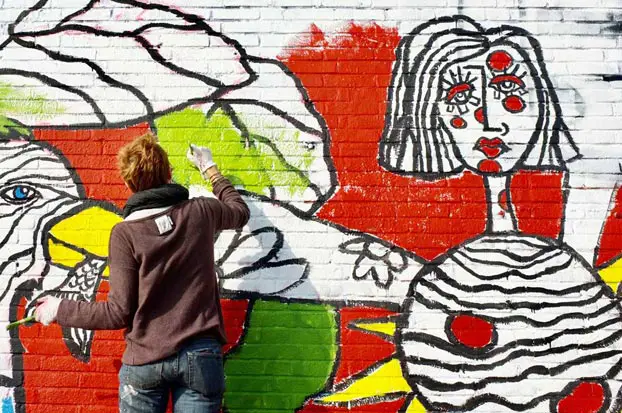
Have you ever done a live painting?
I hadn’t until last year and this year I’ve already done my second one.
If you’re like me, you’ve basically always been drawing and painting for yourself and probably inside the house most of the time.
I have been, too, until I got the chance to do a live painting in the middle of my hometown.
You can watch the video of it here:
It’s an interesting experience to have an audience while practicing your craft.
In a way it’s like public speaking:
You might be anxious beforehand, but the nervousness goes away more and more while you are doing it.
It’s a great way to push yourself to do something new (and exciting and challenging) and learn something on the way.
It takes the private and recreational element of creating art away and transforms it into a public „event“.
In my case, it was a combination of this and ideas #1 and #2 because I hadn’t really painted anything that big before, let alone with brushes!
Sometimes you have to jump in at the deep end and just do it. Good things will happen once you do that, trust me.
13. Collaborate With Other Artists

Art tends to be a lonely hobby sometimes because you’re so focused on yourself and your progress.
It doesn’t have to be!
This year I was contacted by a fellow artist from my hometown. She painted a beautiful picture next to my Joker picture of my first live painting that I mentioned above and asked if I wanted to collaborate with her on a big painting.
It ended up being another live painting (see drawing and painting idea #12). One thing can lead to another.
This is what it looks like:
Collaborations can open you up to whole new worlds because you might be able to see things in a different light than you have before.
Every artist has his unique style and history and will by himself be able to inspire you and point you in new directions you probably hadn’t even thought of before.
Reach out to people around you!
Try to find like-minded artists in your hometown or use social media. The possibilities are endless!
14. Take An Online (Or Offline) Art Class
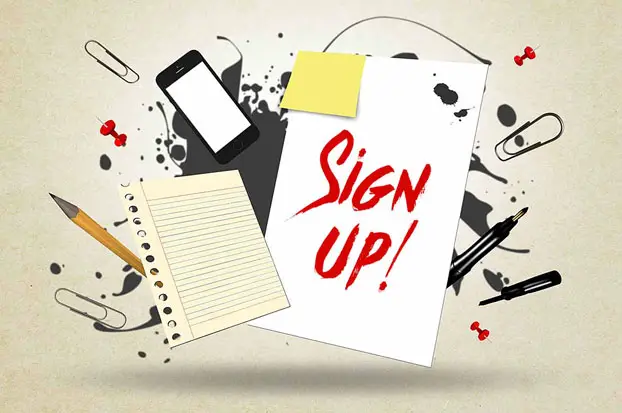
» Try Out Thousands Of High-Quality Drawing Classes Here
Sometimes being a lone wolf like Wolverine can be what holds you back.
Like I said in idea #13, sometimes the viewpoint and input of another person can be what sparks your creativity again.
Instead of directly collaborating with other artists you should consider taking an art class.
A good teacher is probably able to see if you make typical mistakes all his students make and can set you on the right path to improvement.
It might also be motivating if he is an amazing artist himself and shares his work and progress with you.
But even if that’s too old-fashioned for you, there are a ton of online art classes nowadays.
Even on YouTube, there are many amazing channels with videos teaching art. A lot of those offer premium courses, if you want to dive deeper, like Stan Prokopenko.
RELATED: The Best Way To Learn Drawing Fast
15. Put Your Art On Social Media
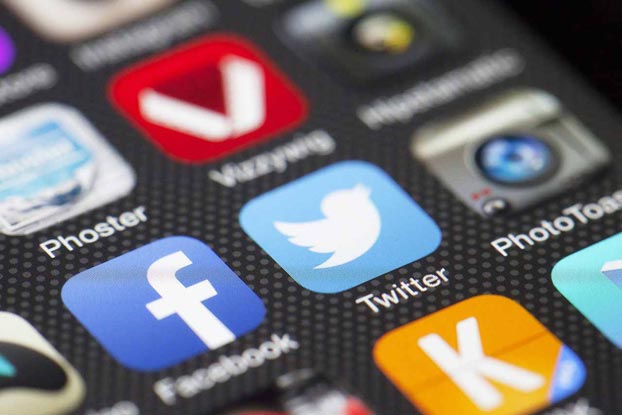
Put your art in front of people!
If you are only creating art for yourself, a creative rut is preprogrammed! You are missing out! Art is meant to be seen!
If you are not already on social media, you should at least create an Instagram account right after reading this article.
Instagram is THE online platform for artists nowadays. It requires a lot of patience and a bit of luck, but is one of the best ways to get noticed as an artist online.
To learn how powerful Instagram can be, check out my article about The Mindset of a Successful Artist.
By the way, I’m on Instagram, YouTube and Facebook, too. I’d appreciate it, if you check my stuff out there!
Final Words
By now you have probably realized that it’s all about challenging yourself and trying something new to find your creativity again.
Artist’s block can be an unnerving experience, but I hope this article shows you that there are a lot of ways to combat it.
Try some of my suggested art ideas and see if it helps you get into the creative flow again and continue getting better and producing amazing artworks.
Now it’s your turn!
What do you think about the ideas I shared here? Do you have any other similar ideas for drawing and painting?
Let me know in the comments below!
-Daniel
NEED MORE IDEAS? READ:
Don’t Know What To Draw Anymore? Try These 12 Cool Ideas!

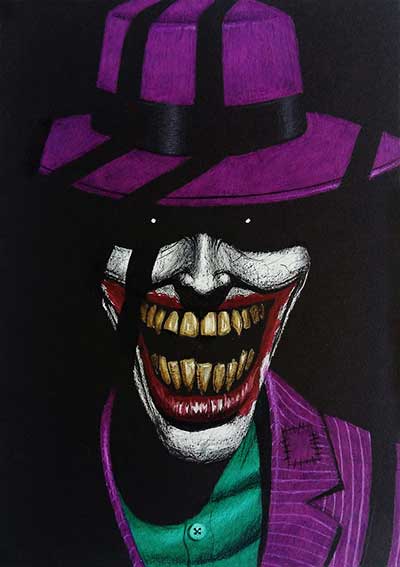
Might be a bit »out of the box«, but what about music? Are you inspired by music? What do you listen to when you draw?
Well, strangely I’m not really motivated by music in terms of drawing/painting. When I’m creating artwork I listen to the same music I always do, which is Metal. Sometimes ambient music, too.
Interestingly though, when I’m writing an article I don’t listen to anything. It kills my concentration and I can’t get anything done that way…
What about you?